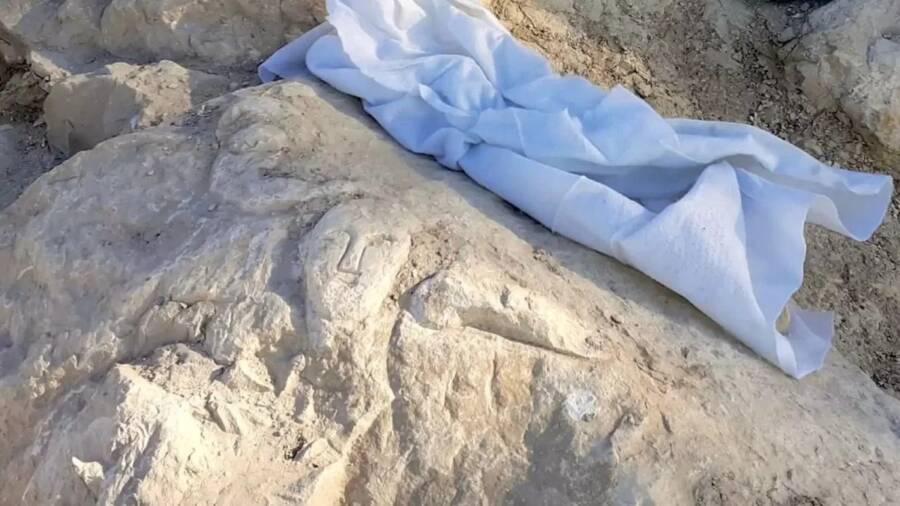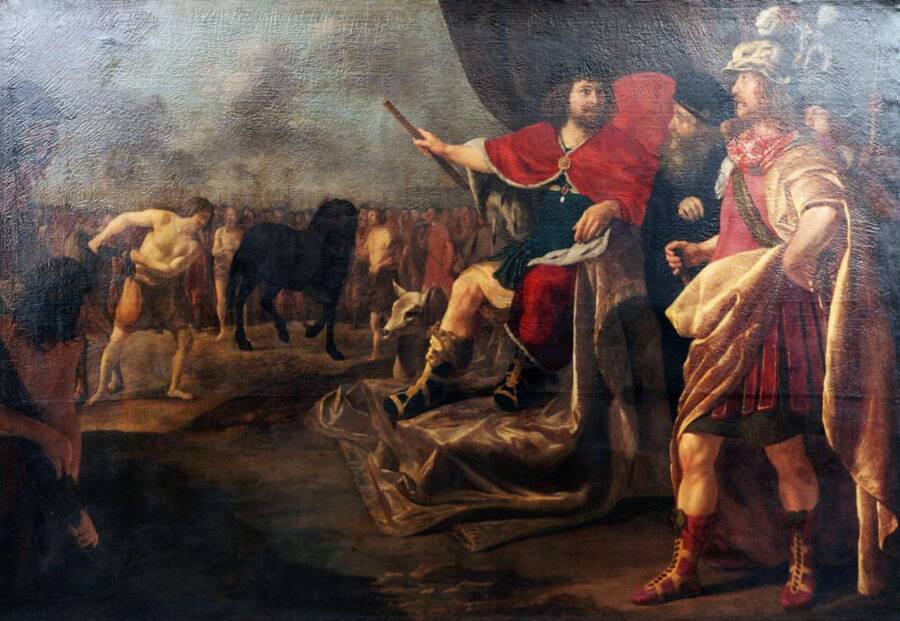In addition to the phallus, the carvings discovered at Tossal de La Cala in Benidorm, Spain, include a face and a cornucopia.

University of AlicanteThe carvings may have had ritualistic meaning, or they may have simply been Roman graffiti.
Amid the impressive remains of the ancient Roman fort Tossal de La Cala in Spain, archaeologists from the University of Alicante have found echoes of its former inhabitants. Excavations at the fort have revealed three carvings in the rock: a face, a phallus, and a cornucopia.
According to Jesús Moratalla, the head of the excavation, these carvings stand as “a relief of outstanding historical importance.”
Archaeologists believe that the three carvings are around 2,000 years old. They measure 57 by 42 centimeters but may have once been part of something much larger. According to Heritage Daily, it appears that the upper right section of rock where the carvings were found is missing.
The missing section isn’t the only historical mystery surrounding the carvings. Archaeologists are also unsure if the carvings were simply graffiti left by a bored soldier or if they had some kind of ritualistic significance.
Indeed, all three carvings could have symbolic significance.

University of AlicanteThe rock carvings offer a tantalizing peek at Tossal De La Cala’s dramatic history.
As Ancient Origins explains, phallic imagery played an important role in ancient Roman culture. They could be used to signify fertility, power, and good luck and could also be used as protection against the “evil eye.” Because of this protective element, Romans sometimes wore phallic amulets, hung phalluses over their doorways, or incorporated them into art like frescoes.
Likewise, the cornucopia symbol — a horn-shaped basket overflowing with fruit, vegetables, and drinks — held ritualistic significance for ancient Romans. This “Horn of Plenty” symbolizes abundance and prosperity. According to Arkeo News, it comes from the legend of Heracles, who purportedly ripped off one of the horns of the river god, Achelous.
The phallus and cornucopia, together with the face, have led some to speculate that the three carvings may symbolize a Roman god or goddess. Ancient Origins theorizes that they could represent Priapus, the Greek god of fertility, who is often depicted with a cornucopia and a large phallus.
However, there are also other Roman deities who are depicted with the cornucopia, who represent the harvest, prosperity, or spiritual abundance.
In any case, the three carvings discovered at Tossal de La Cala offer a fascinating look at the fort’s dramatic history.
The site, first excavated between 1940 and 1965, was likely built by a Roman general named Quintus Sertorius around 77 B.C.E. Then, the Sertorian Civil Wars (80 to 72 B.C.E) raged between Roman rebels called Sertorians and the Roman government. Sertorio, a renowned Roman statesman and military commander, aligned himself with local tribes in Hispania (present-day Spain) to rebel against the government.

Public DomainA 17th-century depiction of Quintus Sertorius, who once allegedly said: “You can better pull out a horse’s tail hair by hair than all at once.”
Sertorio successfully battled against the Roman government but was murdered by conspirators in 72 B.C.E.
As such, the three carvings discovered at Tossal de La Cala capture a gripping moment in ancient Roman history. Perhaps representing a Roman god or goddess — and perhaps made as a mark of protection as signified by the phallus — they offer a compelling look into the violent power dynamics that burned throughout Roman society.
But then again, perhaps the carvings were simply made by a Roman soldier, bored with duty, who decided to inscribe a few figures into the rock.
After reading about the 2,000-year-old Roman carvings found in Spain, discover the fascinating story of the Roman graffiti found in the ruins of the doomed city of Pompeii. Or, see how a Hercules-like statue was discovered in a Roman sewer.





